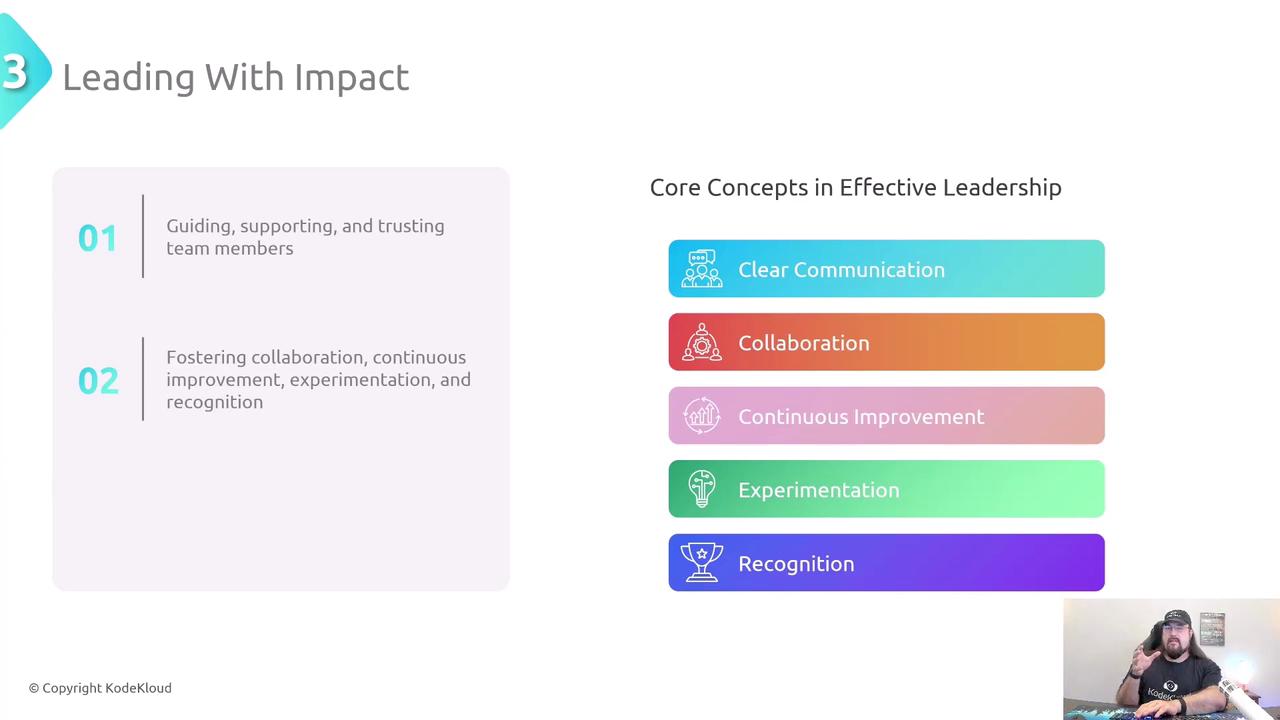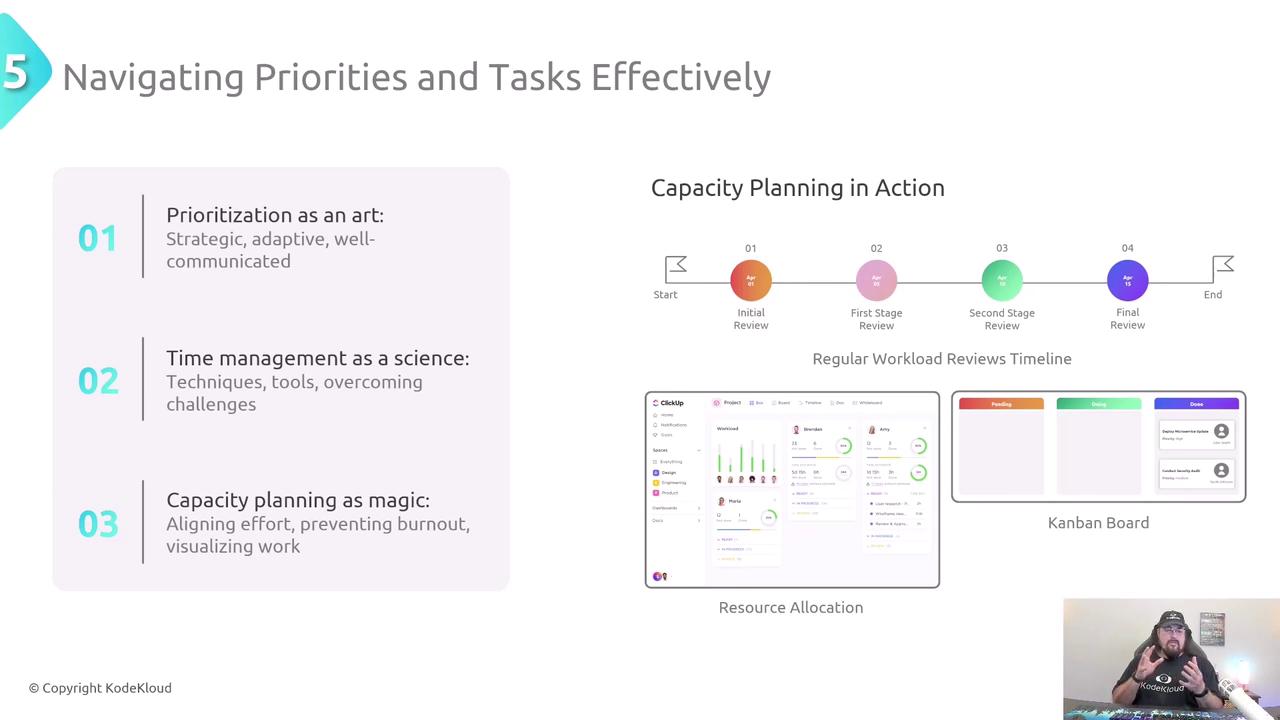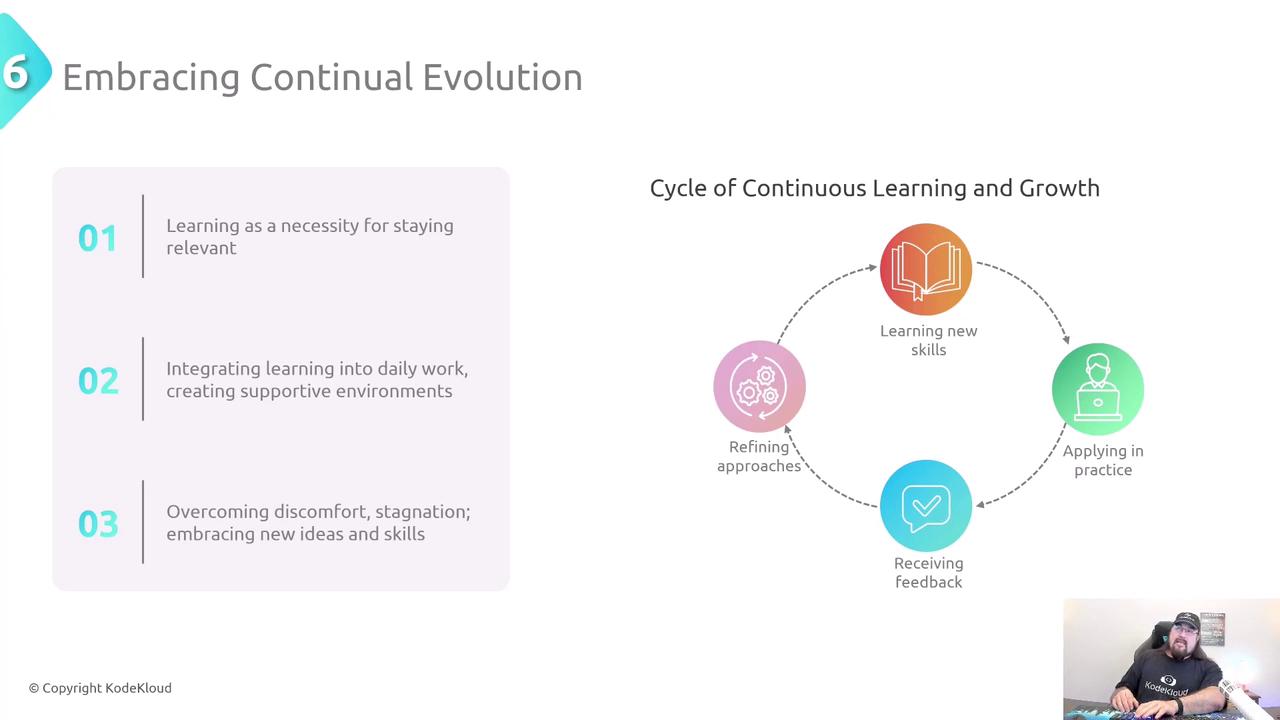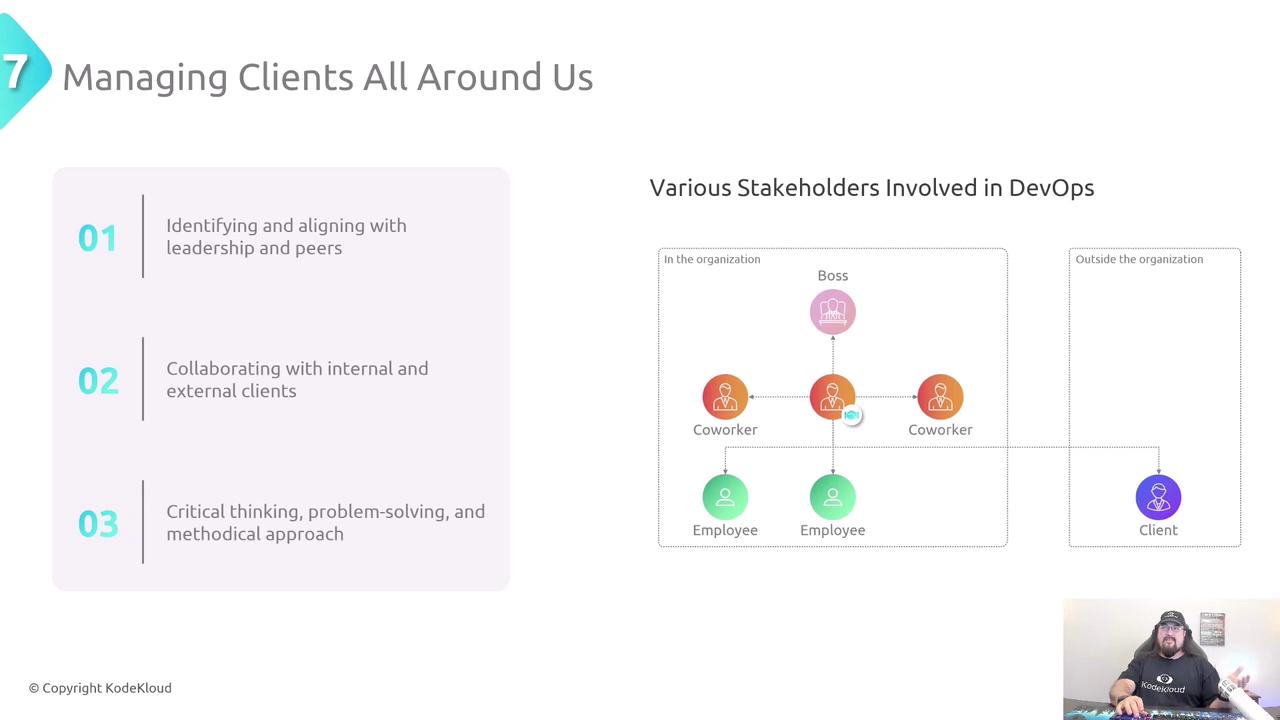Enhancing Soft Skills for DevOps Engineers: Essential Non-Technical Skills to Thrive
Conclusion
Key Takeaways
Welcome, SoftSkill students! I’m Michael Forrester, and this article concludes our exploration of essential non-technical skills—often called “soft skills”—that every DevOps engineer needs to thrive. Below is a concise, SEO-optimized summary of the core concepts we’ve covered.
1. Crafting Compelling Narratives
Effective communication is foundational in DevOps. We explored the Seven C’s of Communication—Clear, Concise, Correct, Coherent, Complete, Concrete, and Courteous—as a checklist for both verbal and written interactions. Tailoring your message to the audience and medium, and leveraging nonverbal cues, ensures alignment and impact.
Note
Always adapt your examples and language to the technical level of your audience—whether they’re developers, operations, or executives.

2. Leading With Impact
Leadership in DevOps combines clear vision with collaboration, experimentation, and recognition. High-impact leaders:
- Define and share a compelling vision, mission, and values.
- Empower teams with autonomy and psychological safety.
- Encourage continuous improvement through regular feedback loops.
- Celebrate achievements at all levels—upward, lateral, and downward.

3. Fostering Team Alignment
True team alignment goes beyond socializing; it’s about intentional collaboration to share knowledge and innovate together. Proven techniques:
- Pair programming and mob programming sessions.
- Co-creating solutions in design workshops.
- Balancing professional distance with genuine human engagement to build psychological safety.
These practices distribute expertise, strengthen relationships, and serve as “social grease” for navigating conflicts and requests seamlessly.
4. Navigating Priorities and Tasks Effectively
Mastering prioritization, time management, and capacity planning helps you deliver high-value work while avoiding burnout:
| Focus Area | Best Practices | Tools & Techniques |
|---|---|---|
| Prioritization | Evaluate value vs. effort; use the Eisenhower Matrix | MoSCoW, Value/Effort charts |
| Time Management | Block focused sessions; experiment with work sprints | Pomodoro Technique, time blocking apps |
| Capacity Planning | Visualize work in progress; measure team throughput | Kanban boards, Jira, Trello |
Track personal benchmarks—such as writing a Terraform script—to measure your efficiency and iterate on your process.
Warning
Overloading your Kanban board with too many tasks can obscure priorities. Limit Work In Progress (WIP) to maintain focus.

5. Embracing Continual Evolution
In the fast-paced world of IT, lifelong learning is non-negotiable. Establish a feedback-driven learning loop:
- Acquire new skills through courses or workshops.
- Apply them in real-world projects.
- Gather constructive feedback from peers.
- Refine your approach based on insights.
Set aside daily “deep work” sessions for skill development, and encourage your team to adopt the same habit. Remember: discomfort and occasional failure are essential catalysts for growth.

6. Managing Clients and Stakeholders
In DevOps, every collaborator—developers, operations, leadership, and external partners—is a “client.” Effective stakeholder management involves:
- Identifying and mapping all stakeholder groups.
- Treating each group’s needs as a service-level commitment.
- Applying structured problem-solving: capture ideas, document decisions, and maintain a shared calendar.
- Communicating progress through regular status updates.

Thank you for following this course. You now have the foundations to:
- Communicate with clarity and purpose
- Lead high-performing teams
- Align and empower collaborators
- Prioritize tasks effectively
- Cultivate continuous growth
- Serve stakeholders with professionalism
Feel free to reach out at [email protected] with feedback or to request deeper dives into any topic. Until next time—keep learning and thriving!
References
- Pair Programming on Wikipedia
- Pomodoro Technique
- Kanban Board Overview
- Terraform Documentation
- Seven C’s of Communication
Watch Video
Watch video content